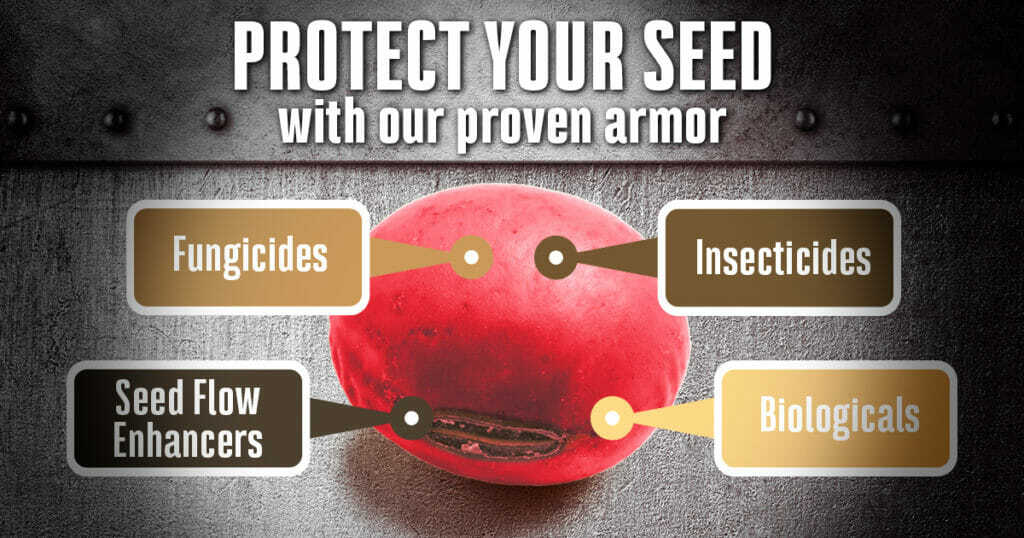-
Latham Hi‑Tech Seeds
Ask the Agronomist: Dicamba Label Updates
 How will the updated XtendiMax label affect your management practices for 2021? Tune in to learn more. #AskTheAgronomist:45 — Topic introduction2:10 – Tank mix updates5:15 – Field buffer updates6:50 – Weed management for buffered areas8:25 – Application rates10:30 – Hooded sprayer opportunity
How will the updated XtendiMax label affect your management practices for 2021? Tune in to learn more. #AskTheAgronomist:45 — Topic introduction2:10 – Tank mix updates5:15 – Field buffer updates6:50 – Weed management for buffered areas8:25 – Application rates10:30 – Hooded sprayer opportunity -
Latham Hi‑Tech Seeds
Research Plots are Key to Building Latham’s Lineup
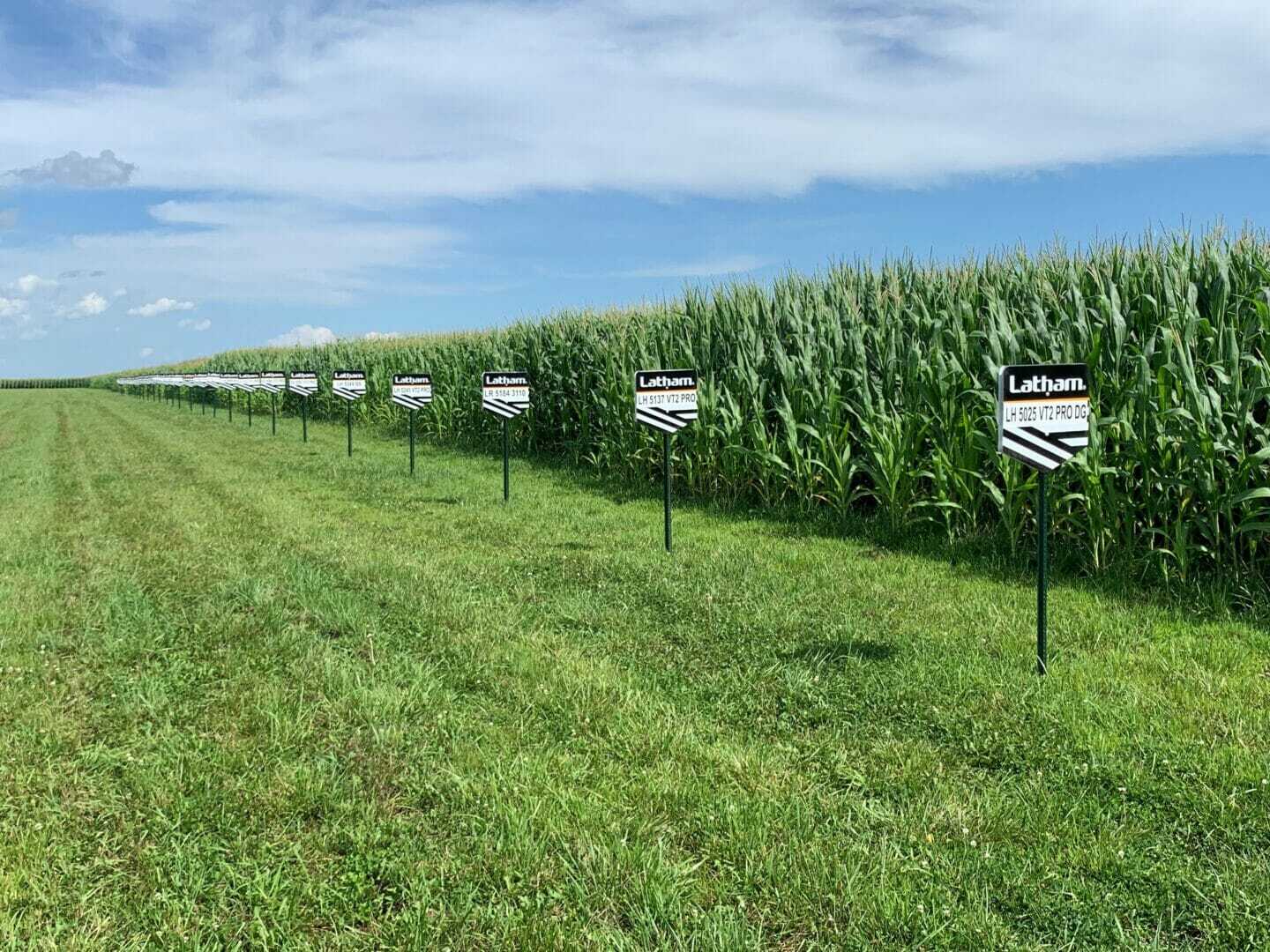
 by Lyle Marcus, Corn Product Manager
by Lyle Marcus, Corn Product ManagerEach December and January Latham’s Corn Product Team reviews all the yield data from the current year plots and from previous years for products that are currently in our lineup, as well as for experimental products that we are considering adding to our lineup.
We fine-tune positioning information for each product and then incorporate that into our company’s product guide and tech sheets. In addition to yield results, we review field notes about product characteristics that we took throughout the growing season.
Our RSMs provide valuable insight that comes from their experiences working directly with you, our customers. We also ask the Latham Sales Team to submit a “Needs Assessment,” so we can match our product offering to customers’ needs. Feedback from Latham® dealers also provides valuable insight.
In addition to RSM and dealer input, Latham’s MiniStrip™ and SuperStrip™ plots help identify hybrids that fit identified needs. Plots planted across our marketing footprint allow us to look for hybrids that can outperform our key hybrids, so our customers can have confidence that we are continually advancing our corn lineup.
SuperStrip plots test the same group of corn hybrids on several farms during the same year. Our MiniStrip plot program allows us to contract with independent third parties to test both existing products, potential new products and experimental products in multiple locations across our footprint. Through our plot programs, we collect data on how hybrids perform by soil type and under various environmental conditions. Hybrids also are evaluated throughout the growing season for their overall characteristics and then taken to yield at harvest as a final comparison.
Research data provides us with building blocks for our crop plan. Keep in mind, what we plant in 2021 becomes the seed we will offer for farmers to plant in 2022.
Winter is really an exciting and busy time of the year for the product team!
-
Latham Hi‑Tech Seeds
Watch for Soybean Gall Midge to Spread in 2021

 by Mark Grundmeier, Soybean Product Manager
by Mark Grundmeier, Soybean Product ManagerRecently, Iowa State University Extension Entomologist Dr. Erin Hodgson delivered a presentation about the spread in 2020 of Soybean Gall Midge (SGM) to 19 more counties across five Midwestern states.
To recap, SGM was identified in 2011 in soybean fields in eastern Nebraska. Then in 2015 and 2016, it was discovered in South Dakota and Iowa, respectively. Widespread damage from SGM wasn’t noted until 2018, and also that year SGM was found in Minnesota. In 2019, SGM was found in Missouri. The scientific name of Soybean Gall Midge is Resseliella maxima.
Scouting for this pest can be very difficult as it is only about 1/10 of an inch long. Focus on the edges of soybean fields, beginning in those areas where you may have seen SGM damage the previous year. Look in your earliest planted soybean fields that are at the V3 stage or later for wilted plants that at first glance look like a disease problem. Then carefully check the base of the plant, giving a slight push to the plant base to see if it will snap off. If it does, split the base of the plant with a knife and look for the orange or white larvae. If you find Soybean Gall Midge, please report this to your local Extension Agronomist. Extension personnel are very interested in tracking the spread of this significant new pest.
Because farmers in Nebraska, South Dakota, Iowa, Missouri and Minnesota have been sharing their findings of SGM, Dr. Hodgson said she and her colleagues are making observations on the insect’s life cycle. Eggs are laid in soybean fields at from 2 to 4 inches deep. These eggs overwinter and emerge as adults the following year, flying into nearby soybean fields that are at that V3 stage or later where they will mate and lay eggs in soybean plants that have a wound or opening. These eggs hatch inside the plant with a total of three instars that will develop and feed on the inside of the plant. The third instar will be the largest and will usually be orange in color. These will eventually drop off the plant and burrow into the soil to later hatch and produce adults. This entire life cycle can take just 28 to 32 days.
Managing Soybean Gall Midge has proven to be very difficult as the larva are well protected by the plant and the presence of adults is extremely widespread through out the growing season. One researcher in Nebraska noted that adults could be found anytime between six and eight weeks in fields. While insecticides will easily control SGM adults, the timing of application over that period would be costly and tedious.
If you farm in the Missouri River area, please watch closely for Soybean Gall Midge and report your findings to your local Extension personnel. I would also appreciate a “heads up,” so I can make some observations of my own.
-
Latham Hi‑Tech Seeds
Ask the Agronomist: How to Identify and Manage Goss’s Wilt
 Tune in for discussion on identifying and managing Goss’s Wilt. Learn about how this bacterial disease can grow and affect nearly up to 50% of your overall corn yield. #AskTheAgronomist1:15 – How Goss’s Wilt affects a corn plant2:38 – How to identify Goss’s Wilt5:00 – Yield impact7:00 – How to manage Goss’s Wilt
Tune in for discussion on identifying and managing Goss’s Wilt. Learn about how this bacterial disease can grow and affect nearly up to 50% of your overall corn yield. #AskTheAgronomist1:15 – How Goss’s Wilt affects a corn plant2:38 – How to identify Goss’s Wilt5:00 – Yield impact7:00 – How to manage Goss’s Wilt -
Latham Hi‑Tech Seeds
4 Factors to Improve Efficiency in 2021
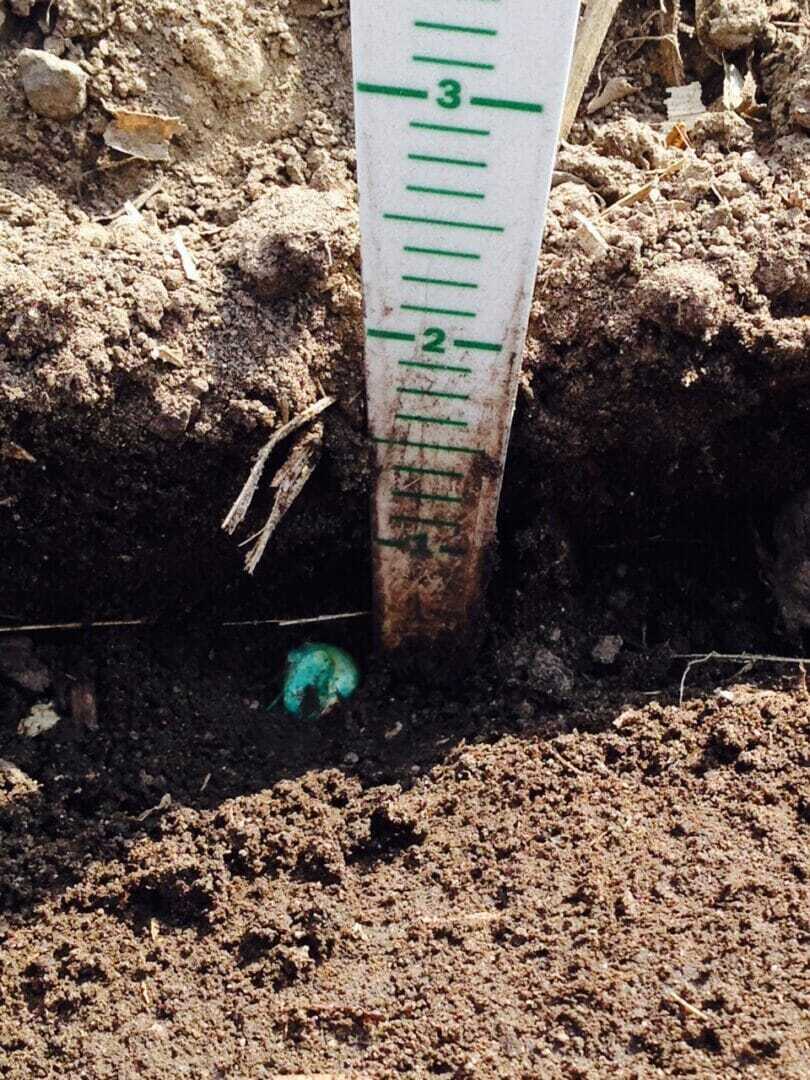
It was a beautiful, extended fall season, giving us ample time to finish tillage, fertilizer applications, tilling and other field work. Our machinery was strategically tucked away in the shed before the snow fell. Speaking of strategic placement…
Is your planter all the way in the back of the shed because you aren’t planning to touch it until March? Now is actually a good time to start thinking about your planter. New technology allows us to make our existing planter as good as – if not better than – the brand new planter on the lot at the implement dealership. One perk of working with us at Latham Hi‑Tech Seeds is using our Data ForwardSM services to help you make some unbiased decisions. Perhaps you weren’t happy with the way your corn was spaced in 2020 or maybe you noticed uneven emergence last spring. We can help you determine why this happened and fix these issues before going into 2021 planting season.
If you attended a plot tour last summer or listened online to our Corn Product Manager Lyle Marcus, you know he emphasized the importance of planting depth. It can be difficult to stay consistent across the field; controlling planter speed is one of the simplest ways to achieve optimum seed placement. We can review planter speed. We also can explore technology options for your planter, so you can monitor and control variabilities throughout a field.
Another factor to consider is planting depth. Oftentimes, we say 2.75 inches is a safe planting depth to allow adequate moisture and growing degree units (GDUs) to attain even emergence.There is a lot of talk around two-inch planting depths. This could be optimal if there is adequate moisture. Planting at 2 inches with adequate moisture can get you better emergence due to having faster GDU adaptation. This also means that it could come out of the ground better in crusting conditions, but keep in mind that the key to shallower planting is moisture. It’s risky to rely on moisture being available at that shallower depth.
We spend a lot of time helping our Data Forward clients improve efficiency. While this can encompass many things, we focus on your planter, seed and equipment. We believe one of the most important assets to a farmer’s operation is the planter. If the planter is not equipped to place that seed where it is going to thrive, then other investments throughout the year are not going to be as valuable either.
One of our biggest challenges is helping clients achieve uniform, speedy emergence. If one plant emerges 24 to 48 hours after its neighbor, that plant will compete for the sunlight that its neighbor is already harvesting. The plant starving for sunlight will be a runt for the rest of the growing season.
Keep these four things in mind when trying to keep even heat and moisture to achieve even emergence:- Manage residue.
- Maintain planting depth.
- Achieve good seed-to-soil contact (no air pockets).
- Eliminate compaction.
If you want to improve efficiency, planter performance, and data management for 2021, it’s time to plan. Call your Latham Precision Agronomy Advisors now for unbiased recommendations to get your 2021 crop off to a better start!
-
Latham Hi‑Tech Seeds
Ask The Agronomist: Choose Planting Populations by Hybrid
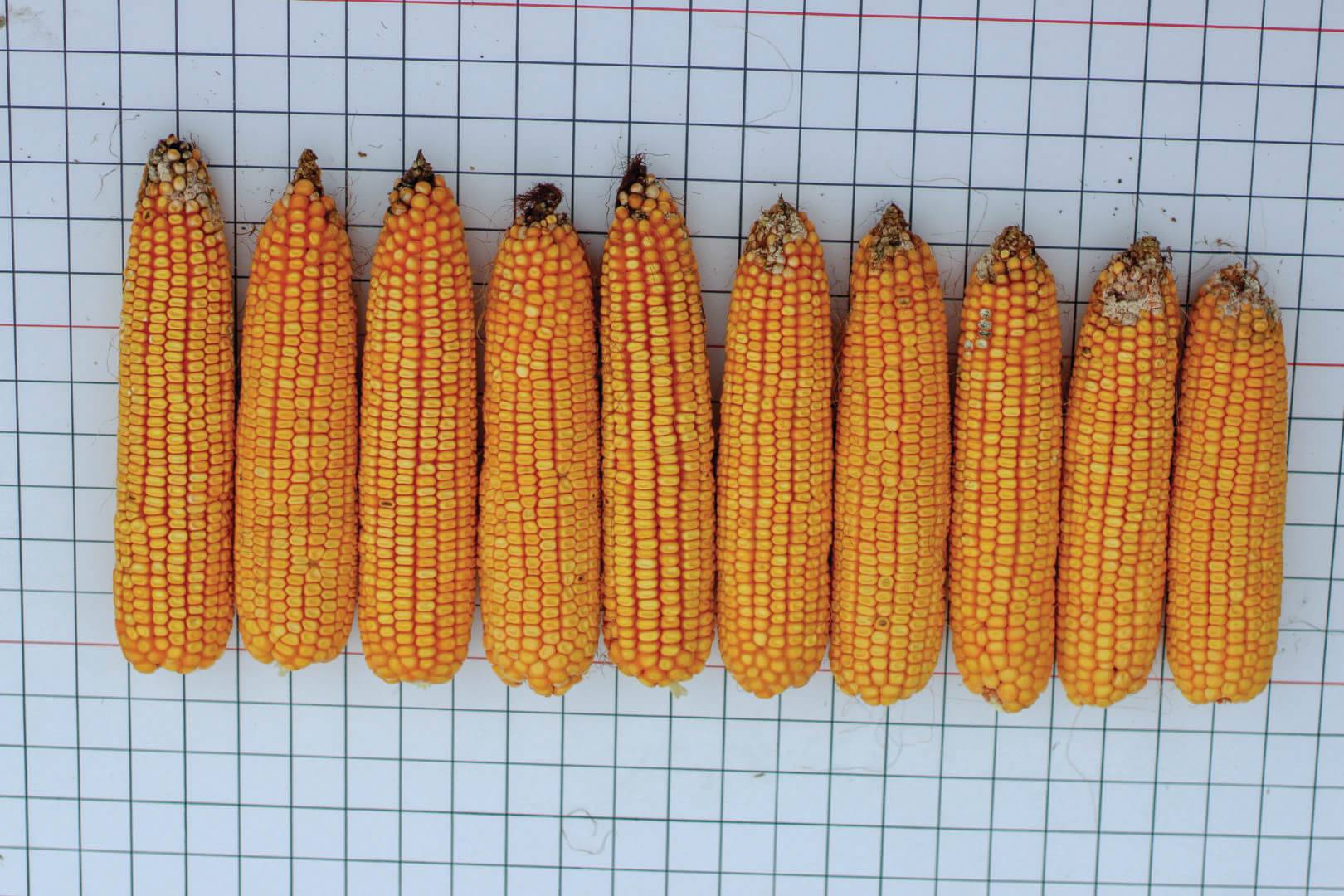
Tune in for discussion on choosing planting population by hybrid. Take time this winter to make a game plan for spring! #AsktheAgronomist
Ask the Agronomist: Managing Stress & Ear Flex: https://www.lathamseeds.com/2020/10/ask-the-agronomist-managing-stress-ear-flex/
-
Latham Hi‑Tech Seeds
Give Alfalfa a Second Look
Alfalfa can offer one of the highest returns on a farmers’ investment, but it often gets the least amount of consideration. Growers often purchase alfalfa from the first salesperson who asks for the order, but it really pays to compare alfalfa products. You usually get what you pay for, and quality pays for itself.
Latham Hi‑Tech Seeds offers very competitive, highly productive, Olympic-style alfalfa products. Unfortunately, we tend to undersell the advantages our alfalfa line carries.
Here are three reasons why alfalfa from Latham is superior:
- Best genetics offer higher yield potential.
- Top seed quality leads to higher germination rates.
- Best seed treatment fosters emergence success.
Because most farmers only get approximately 40 chances in their careers to get a crop right, make each one count! One key to top yields is fast emergence. When you merge the best genetics with the best seed treatments, farmers can have confidence they have done all they can to manage environmental risks.
Latham’s AlfaShield seed treatment surrounds the alfalfa seed, helping it absorb soil moisture quickly to begin the germination process. AlfaShield also contains key micronutrients, as well as a growth promoter called Optimize Gold, that accelerate emergence.
New seeding mortality rates were very high, from 50 to 75% in the first year, with old seed treatments. New treatments like Stamina, however, reduce pathogen problems and manage risk. As a result, seedling mortality is lower and higher yields are possible.
Our goal is MORE LIVE PLANTS per bag, which allows you to capture more yield. Seed selection and fertility are key, so help set your crop up for success by choosing alfalfa products from Latham Seeds.
-
Latham Hi‑Tech Seeds
#AsktheAgronomist: Protect Your Investment with Seed Treatment
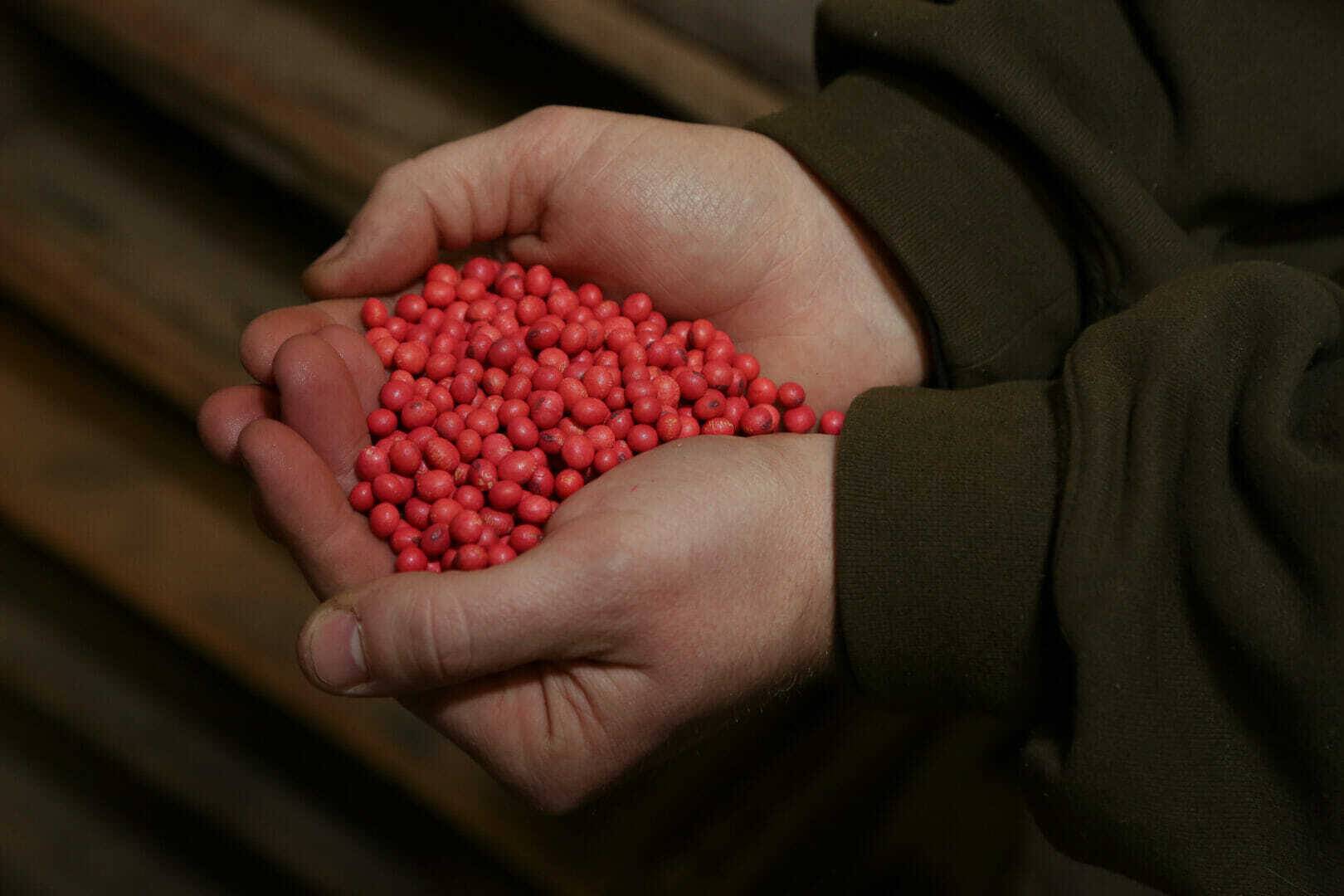
Join us as we discuss the importance of protecting your investment every year. How does Latham Seeds seed treatment differentiate? Tune in and find out!
-
Latham Hi‑Tech Seeds
Seed Treatment Fundamentals
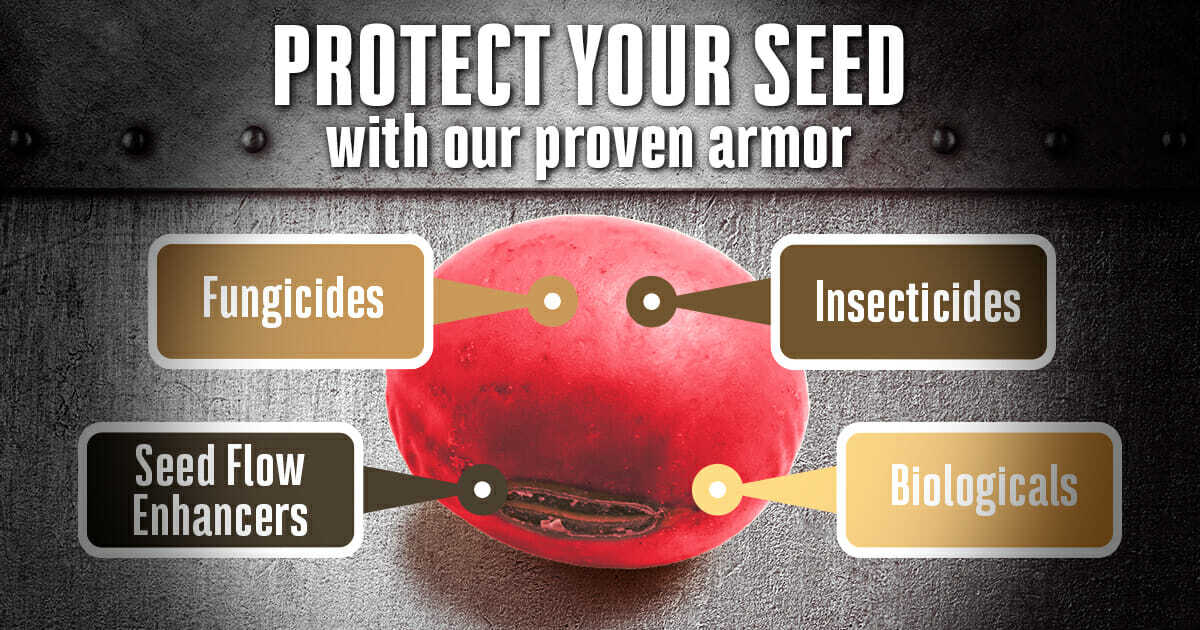
Did you know up to 90% of seedling diseases are caused by 4 major fungi? These fungi kill soybean seedlings before emergence or damage the seed enough to reduce yield.
4 Major Fungi:
- Pythium
- Phytophthora
- Rhizoctonia
- Fusarium
Research shows that during the emergence stage alone 2.5 bushels of soybean yield are at risk due to seed rot and seedling blight. Latham SoyShield® brand seed treatments are best-in-class formulations designed to battle the toughest pathogens like Fusarium and Phytophthora.
Instead of viewing seed treatment as an input cost, consider it an investment – an insurance policy if you will. After all, it takes less than a bushel of soybeans to pay for the cost of treatment!
Wet, poorly drained soils favor the development of fungal pathogens that cause seedling diseases, which slow germination and plant growth. Seed treatments protect seedlings until they have a fairly well-established root system.
To help the seeds go through the planter better, Latham Hi‑Tech Seeds adds a proprietary blend of polymer and seed coating. Our customers say they waste less seed and see more even stands, resulting in better yield potential and ultimately an increased return on investment.
Latham Hi‑Tech Seeds’ signature SoyShieldTM, a fungicide-only package, and SoyShield PlusTM with fungicide and insecticide, protect seeds from disease and insect damage for up to 30 days. This time frame is longer than many other seed treatments and is typically an adequate window of protection.
SoyShield Plus includes an exclusive fungicide combination that provides excellent protection against seed and soil borne diseases including: Pythium, Phytophthora, Fusarium and Rhizoctonia. In addition, seed treatments can provide health benefits for more rapid and increased germination under certain conditions.
Some seed treatments also help protect against nematodes, which are becoming more prevalent. Many fully-loaded treatments may have innoculants, micronutrients or plant food. Interested in learning more? Talk to your local Latham® representative or leave your comments below. You’re also welcome to call us at 1-877-GO-LATHAM (1-877-465-2842).
-
Latham Hi‑Tech Seeds
How to Use Multi-Year Yield Data Effectively

Single-year data from corn test plots or even whole-field results can cause a farmer to question what hybrids to plant next spring. Because yields were especially variable across the Upper Midwest in 2020, I want to remind you how important it is to look at more than one year’s worth and more than one location’s worth of data.
Here are two ways you can use multi-year yield data effectively:
- Select individual hybrids that are consistently top performers.
- Look for groups of hybrids that, when planted together, provide top yield averages over time. In my experience, planting top-performing packages provides farmers with more uniform success. Planting packages of hybrids with top performance lessens variability.
Our 2020 plot data from F.I.R.S.T. Trials, on-farm SuperStrips with cooperating Latham® dealers, as well as our replicated MiniStrips proves again that Latham brand hybrids are top-yielding hybrids. Our wide area of testing shows very strong performance of Latham hybrids across various environments, soil types and management practices.
As I was preparing multi-year data to share during last month’s Post-Harvest Huddle meetings with Latham dealers, these top performers captured my attention. Be sure to take a closer look at these Latham brand hybrids as you finalize your 2021 crop plans:
- LH 3937 VT2 PRO RIB: This 89-day hybrid has quickly become a favorite of our early-season customers in North Dakota, Minnesota and Wisconsin. It is the anchor in packages in the 85- to 92-day group. This hybrid earned four Top 5 finishes in 2020 F.I.R.S.T. Trials and won in the 2019 F.I.R.S.T. Trials. It also earned 1st place in 2020 Latham SuperStrips plus finished 1st and 2nd in 2019 SuperStrips. Our customers have made consistent yields over time by packaging this hybrid with LH 3695 VT2 PRO RIB, LH 4097 VT2 PRO RIB and LH 4242 VT2 PRO RIB.
- LH 4937 VT2 PRO RIB: This top yielding, 99-day hybrid performs across a wide area for adaptability. We have seen great yields across Latham Country. Its accolades include 1st place and Top 5 finishes in the 2018, 2019 and 2020 F.I.R.S.T. Trials. It also topped SuperStrip plots from 2018 to 2020. Package this hybrid with LH 4454 VT2 PRO RIB, LH 4657 VT2 PRO RIB and LH 5047 VT2 PRO RIB for an outstanding group of hybrids to fit 94- to 100-day maturity.
- LH 5245 VT2 PRO RIB: Latham customers are raving about the yields they saw this year from LH 5245 VT2 PRO RIB. This hybrid’s performance during the past three seasons has made it one of the top 102-day performers across Latham Country against competitors. Package this hybrid with LH 4937 VT2 PRO RIB and LH 5047 VT2 PRO RIB for a 99- to 102-day package. In fuller season areas, pair it with LH 5377 VT2 PRO RIB and LH 5487 VT2 PRO RIB.
- LH 5725 VT2 PRO RIB: This 107-day product has the ability to move north as a full-season product. It performed well across the Southern Minnesota F.I.R.S.T. Trials locations. It has several multi-year F.I.R.S.T. Trial wins and top finishes from Nebraska, Iowa and Wisconsin. Plant this hybrid with LH 5245 VT2 PRO RIB, LH 5487 VT2 PRO RIB, LH 5635 VT2 PRO RIB, LH 5847 VT2 PRO RIB and LH 6285 VT2 PRO RIB for outstanding yield averages in different maturities.

